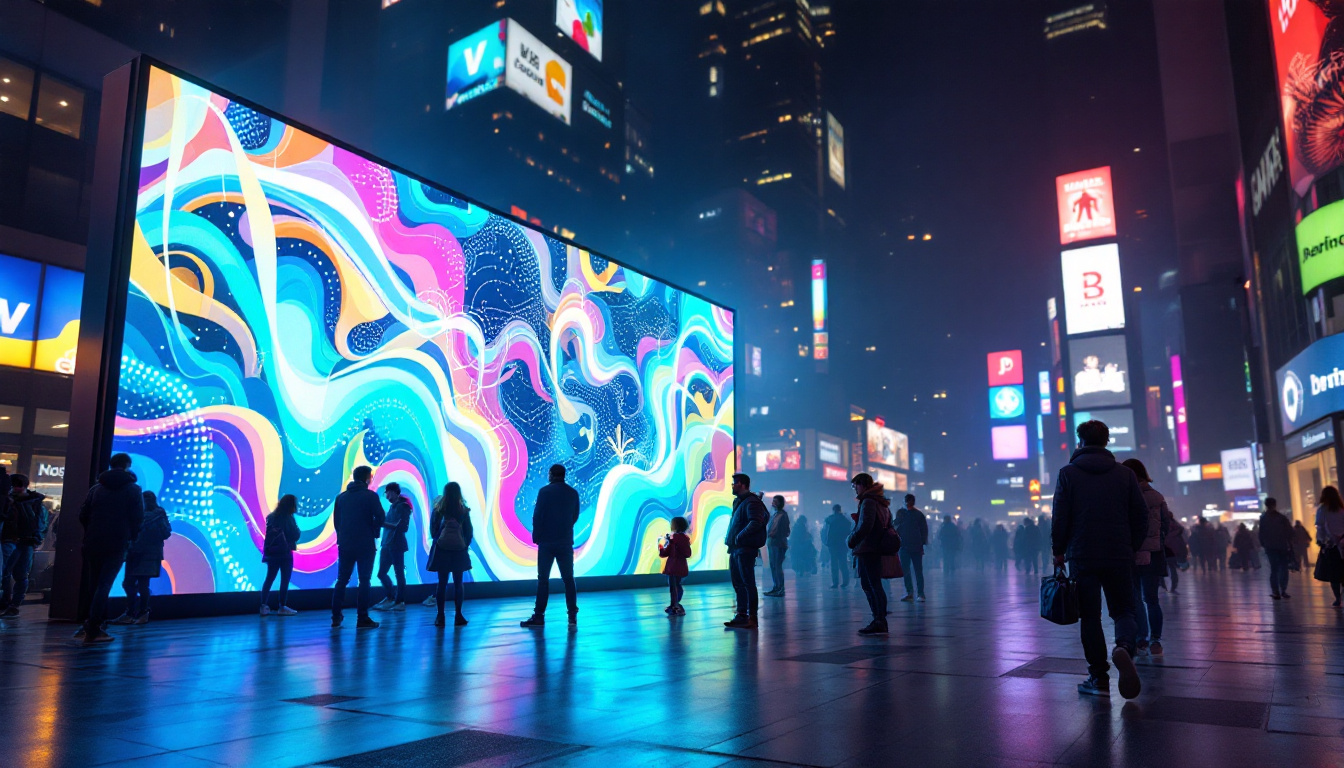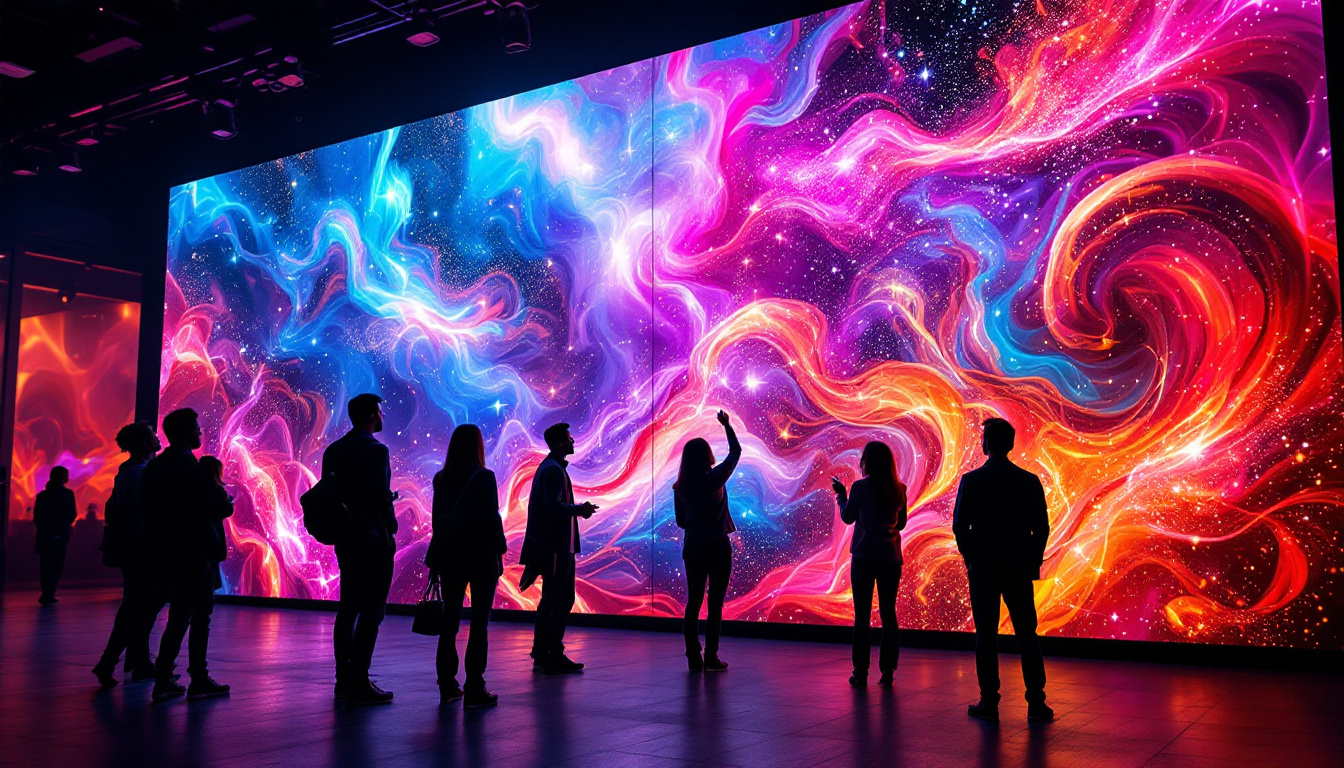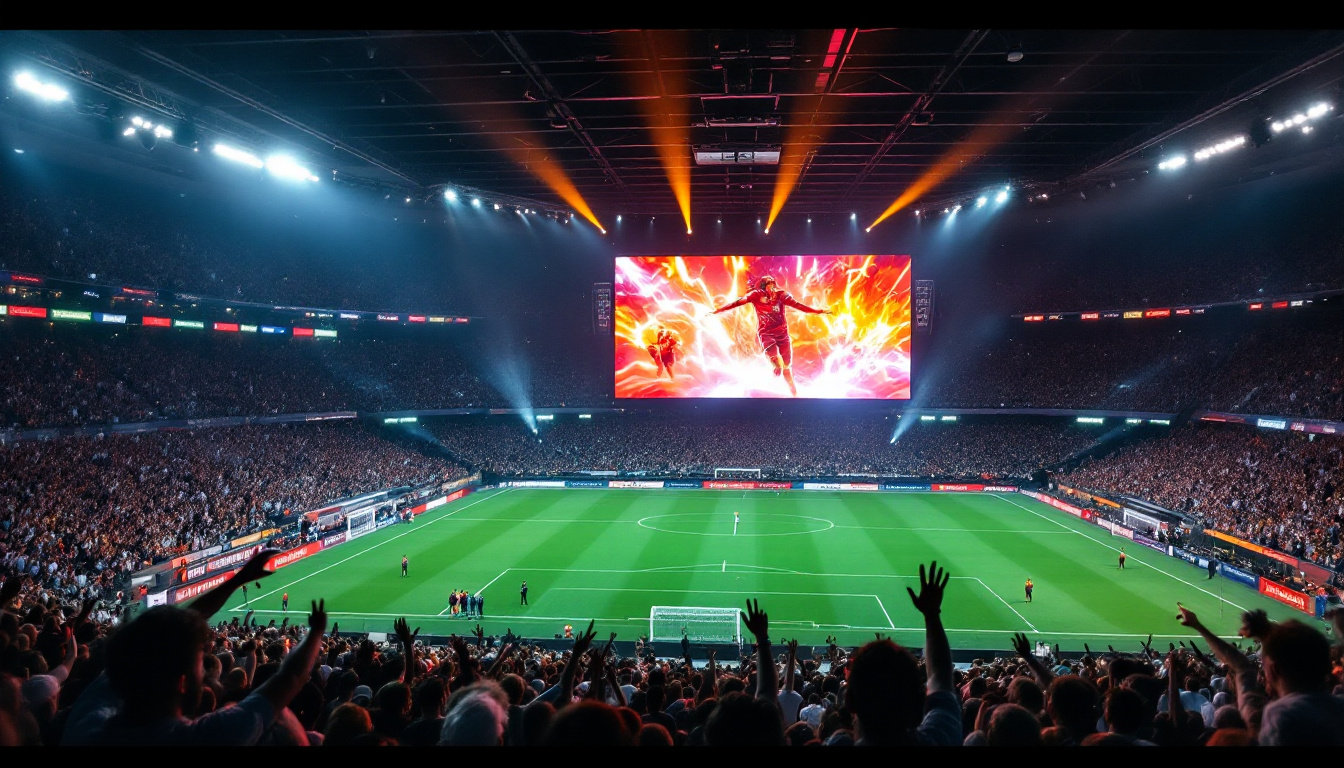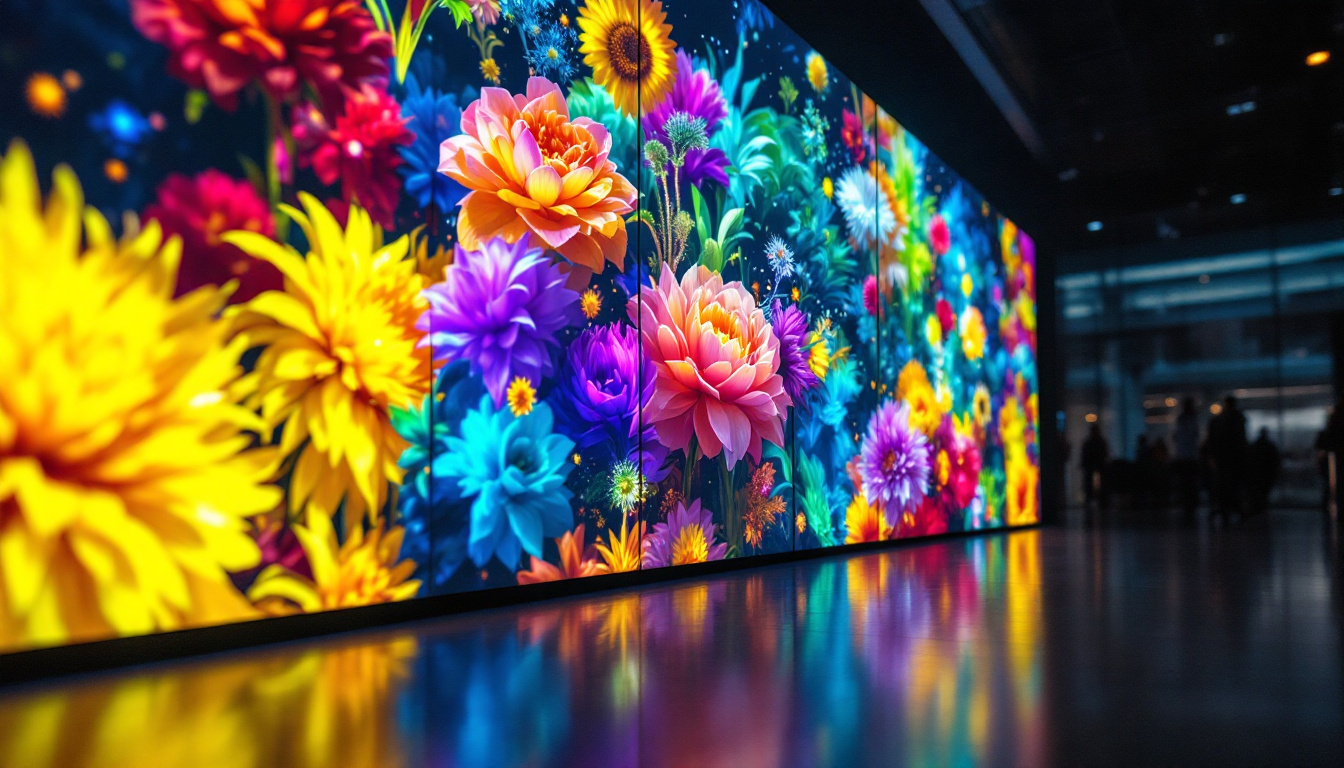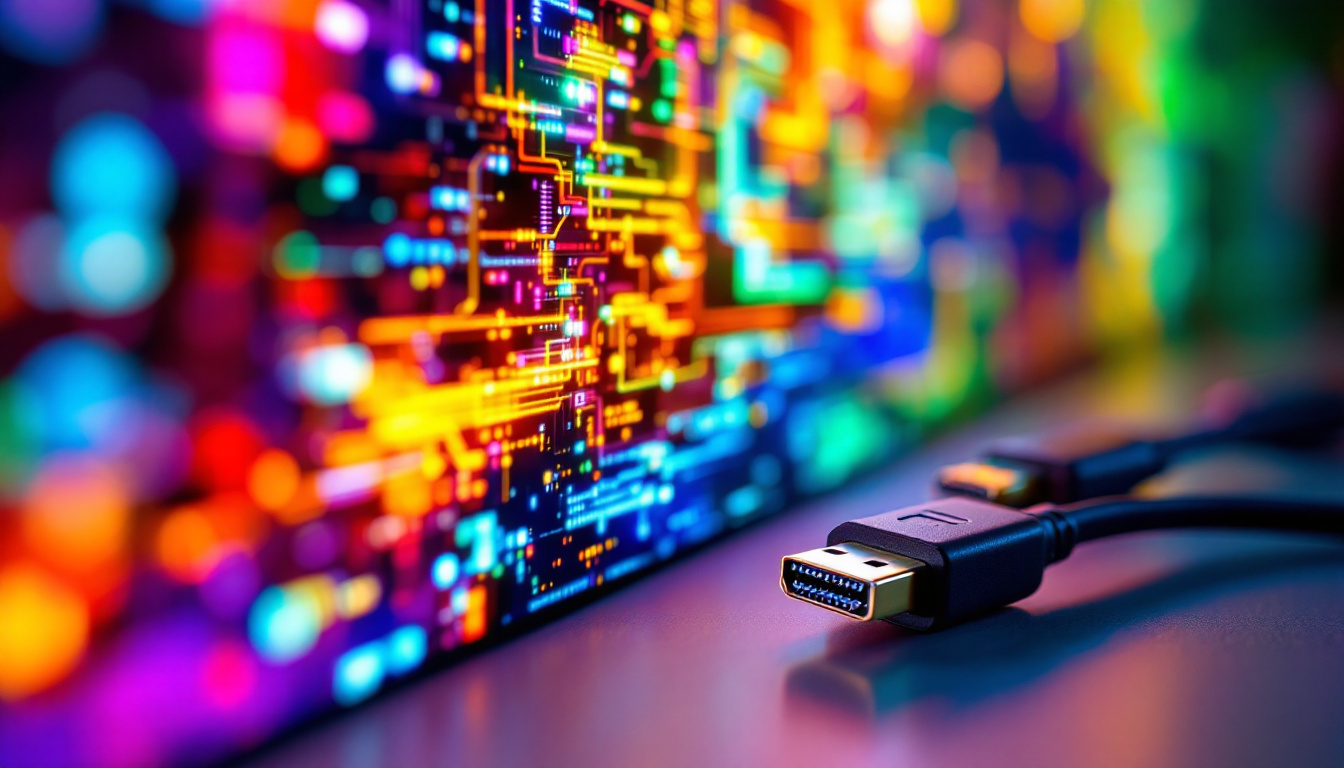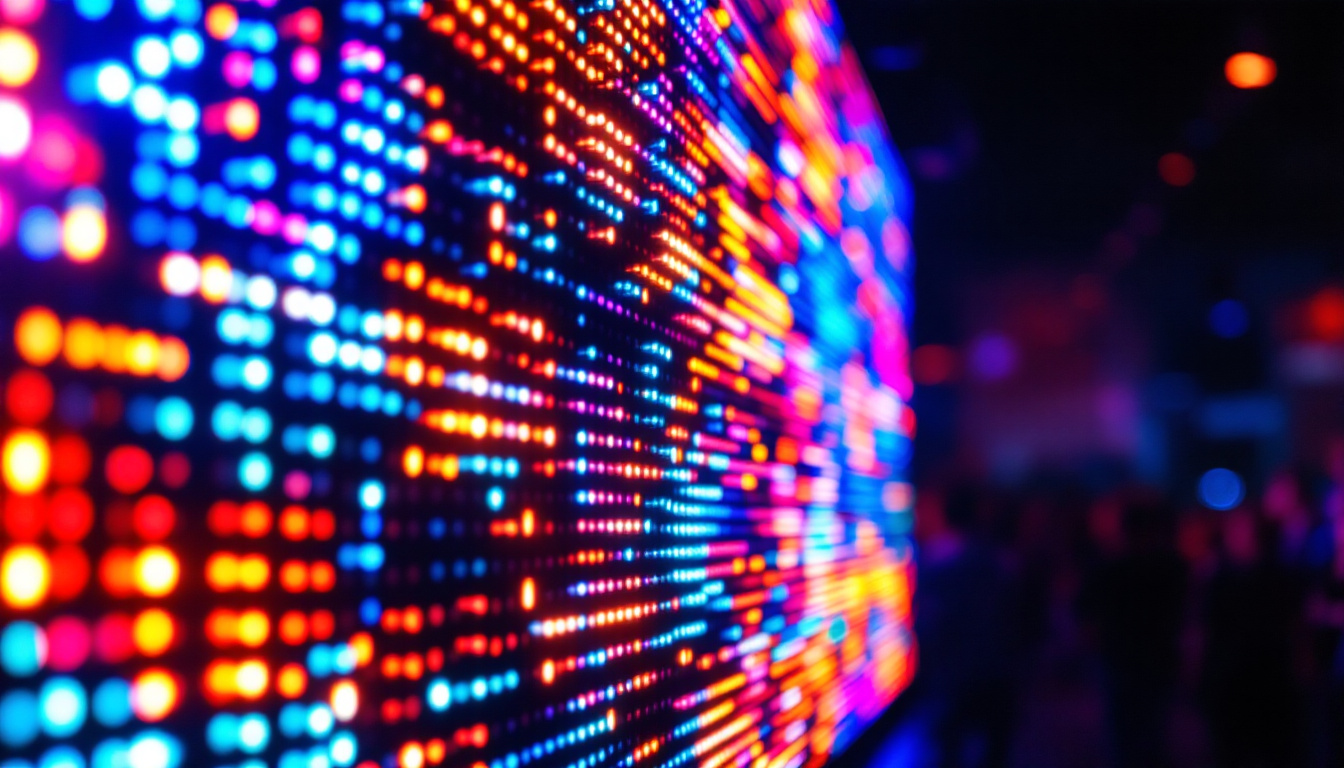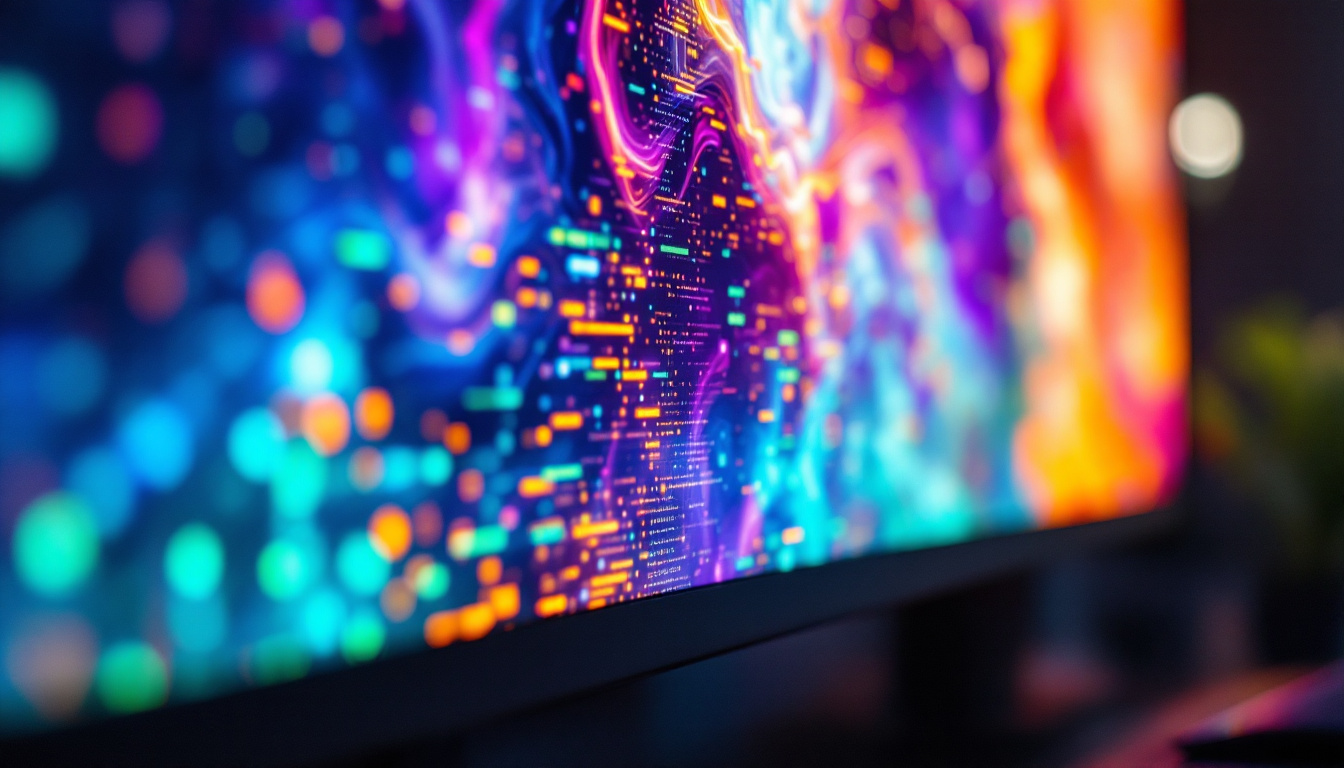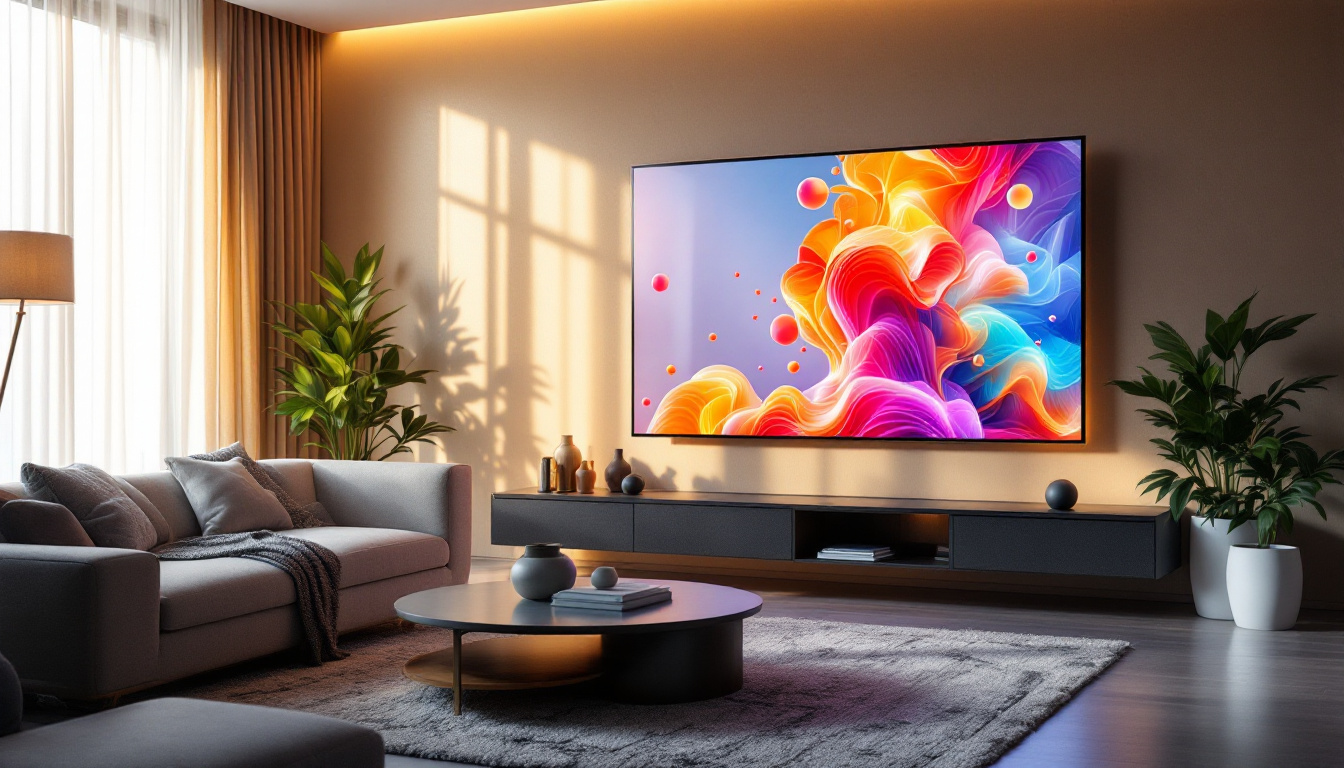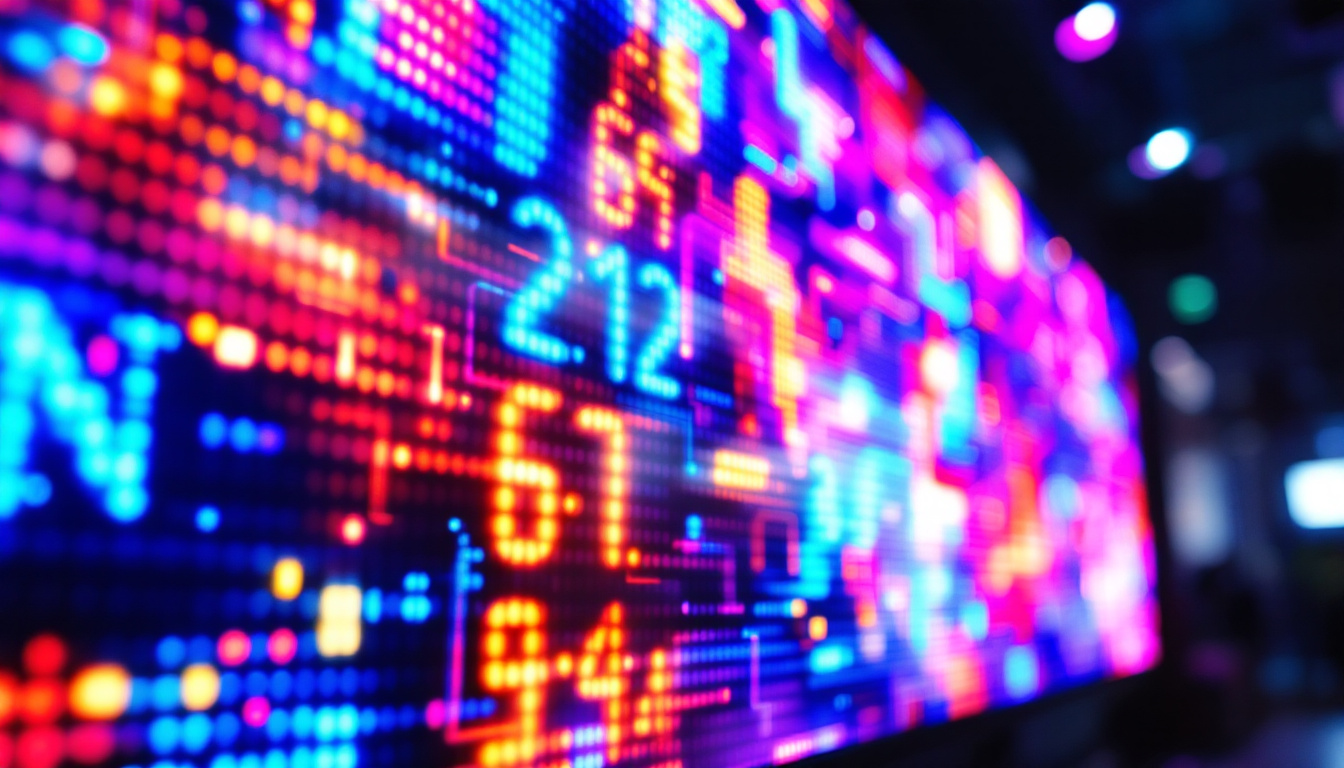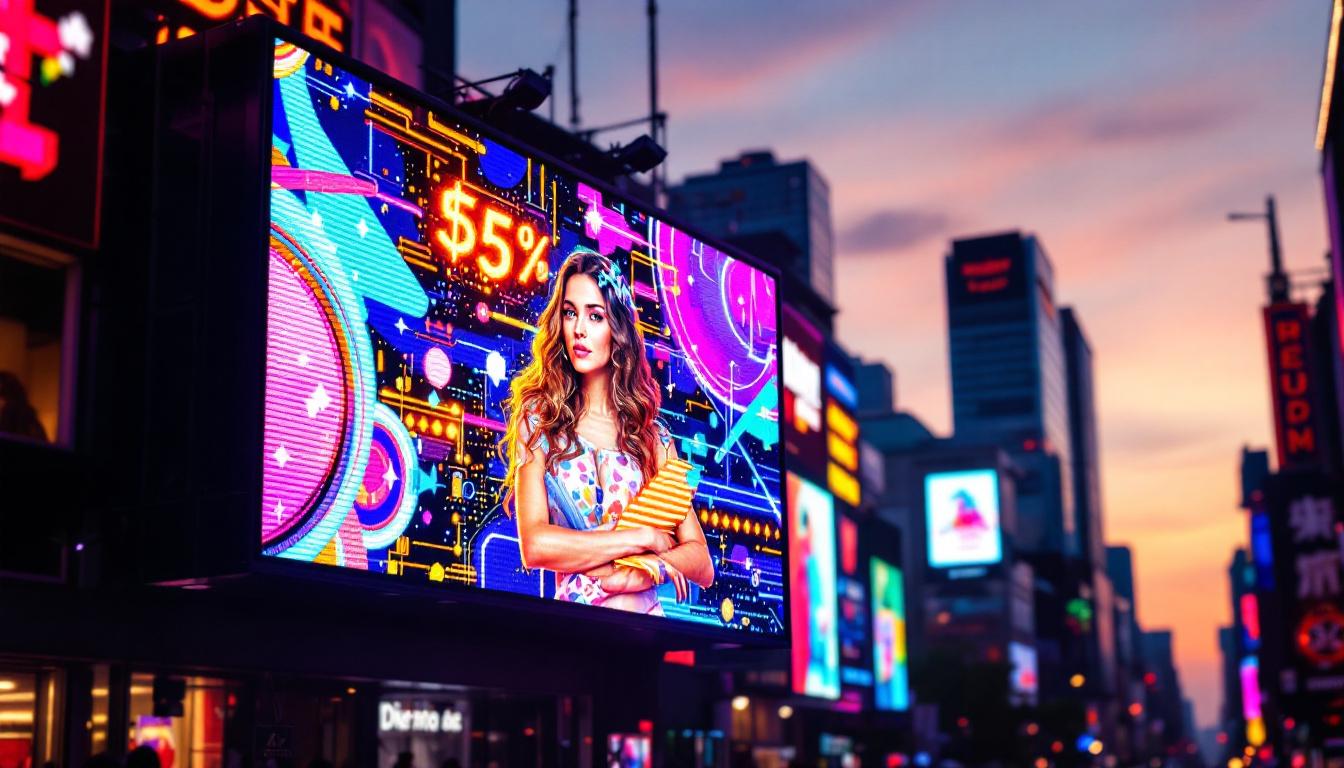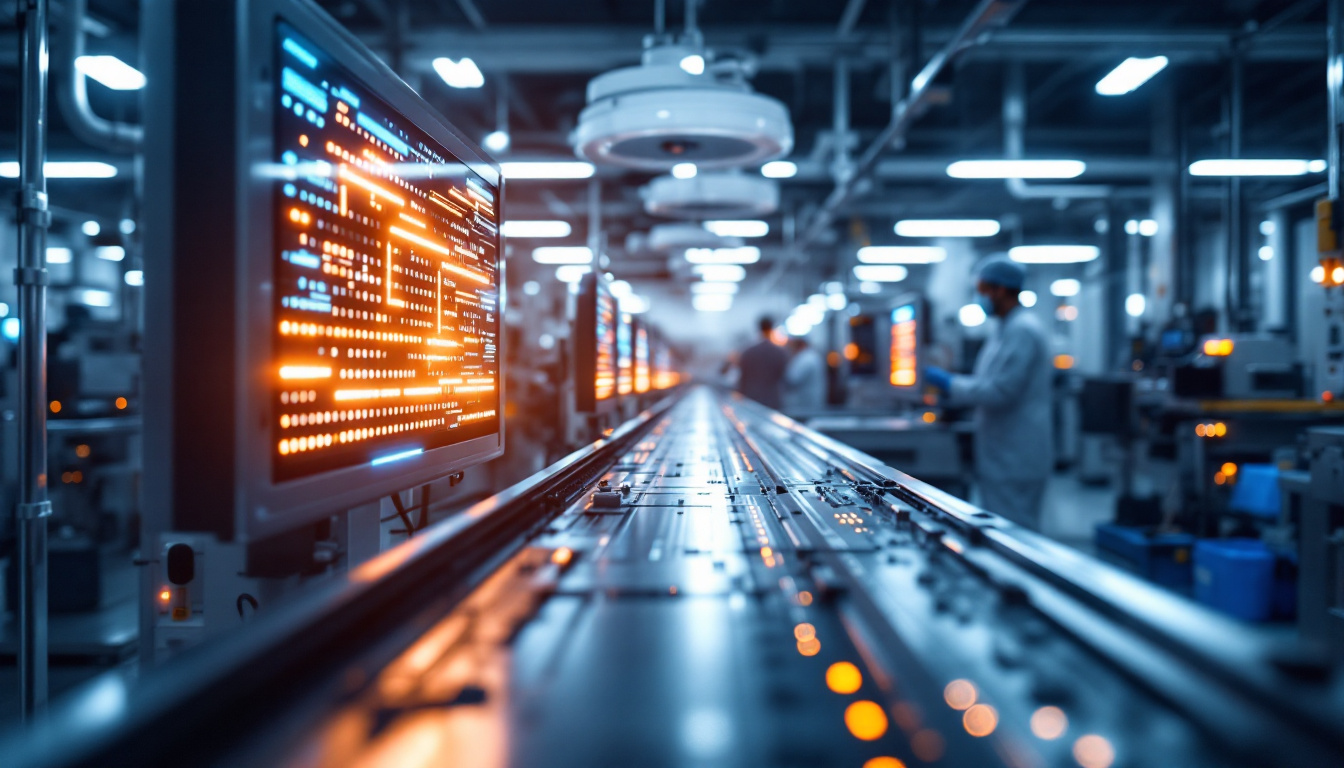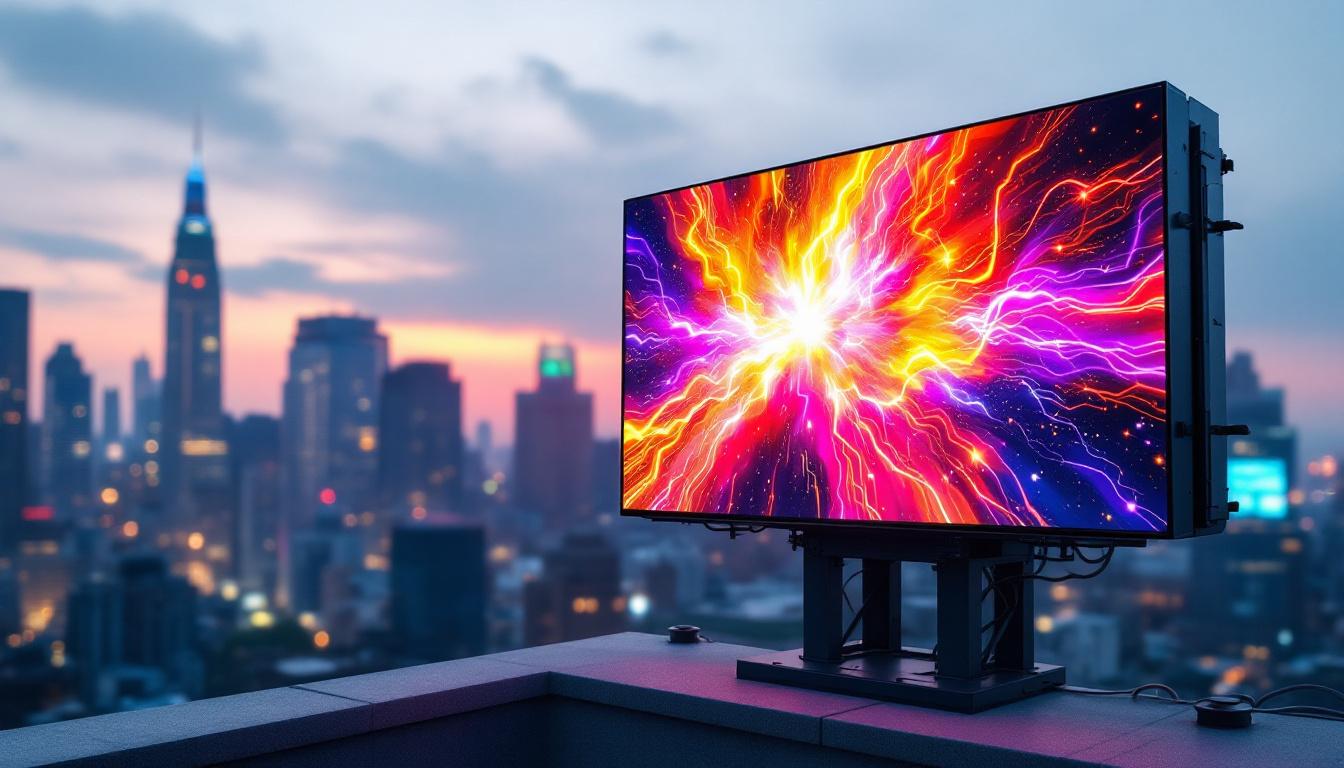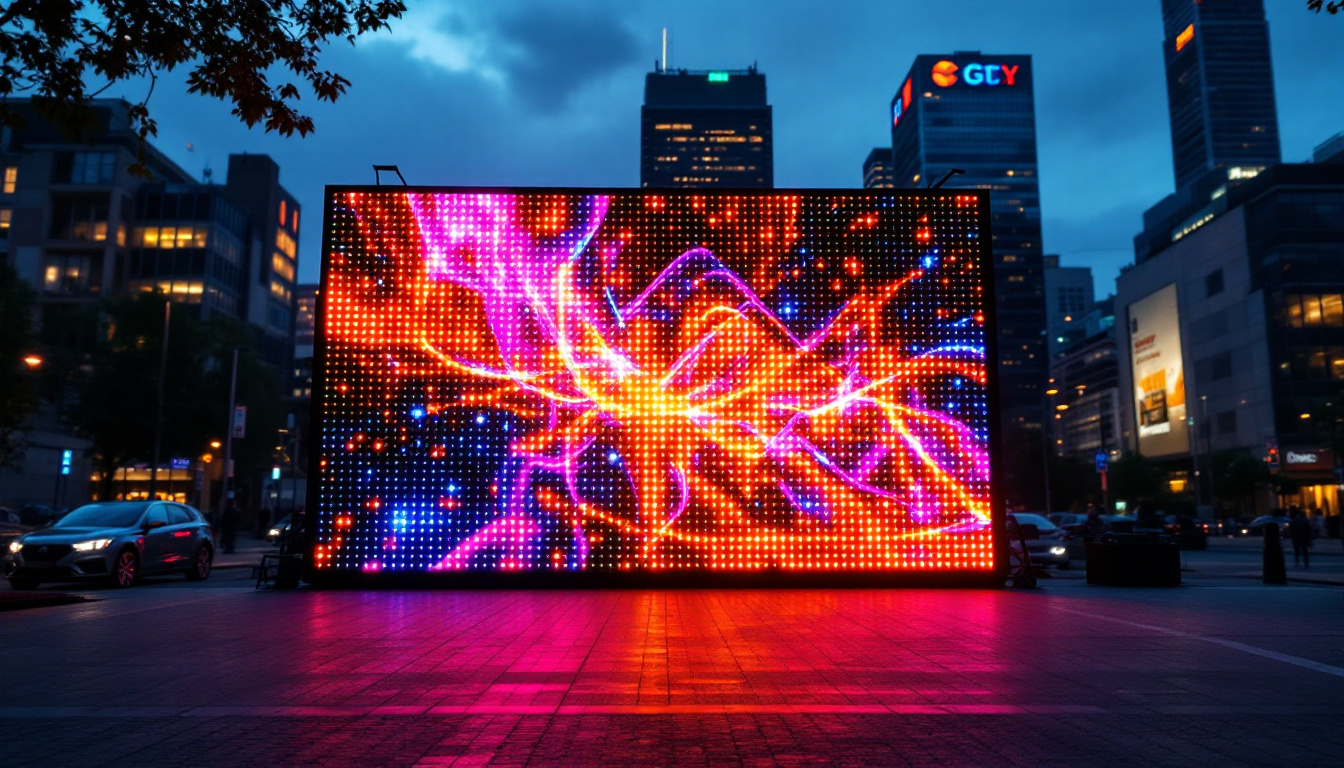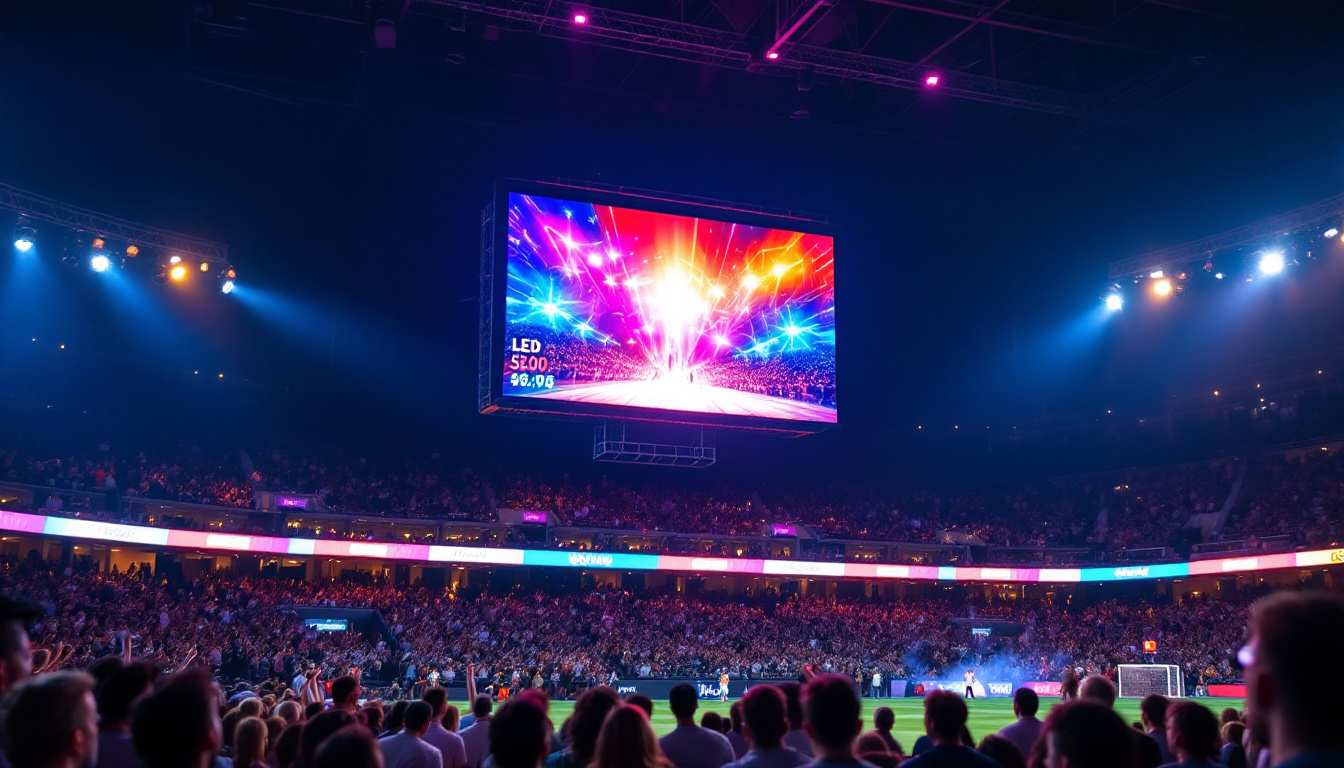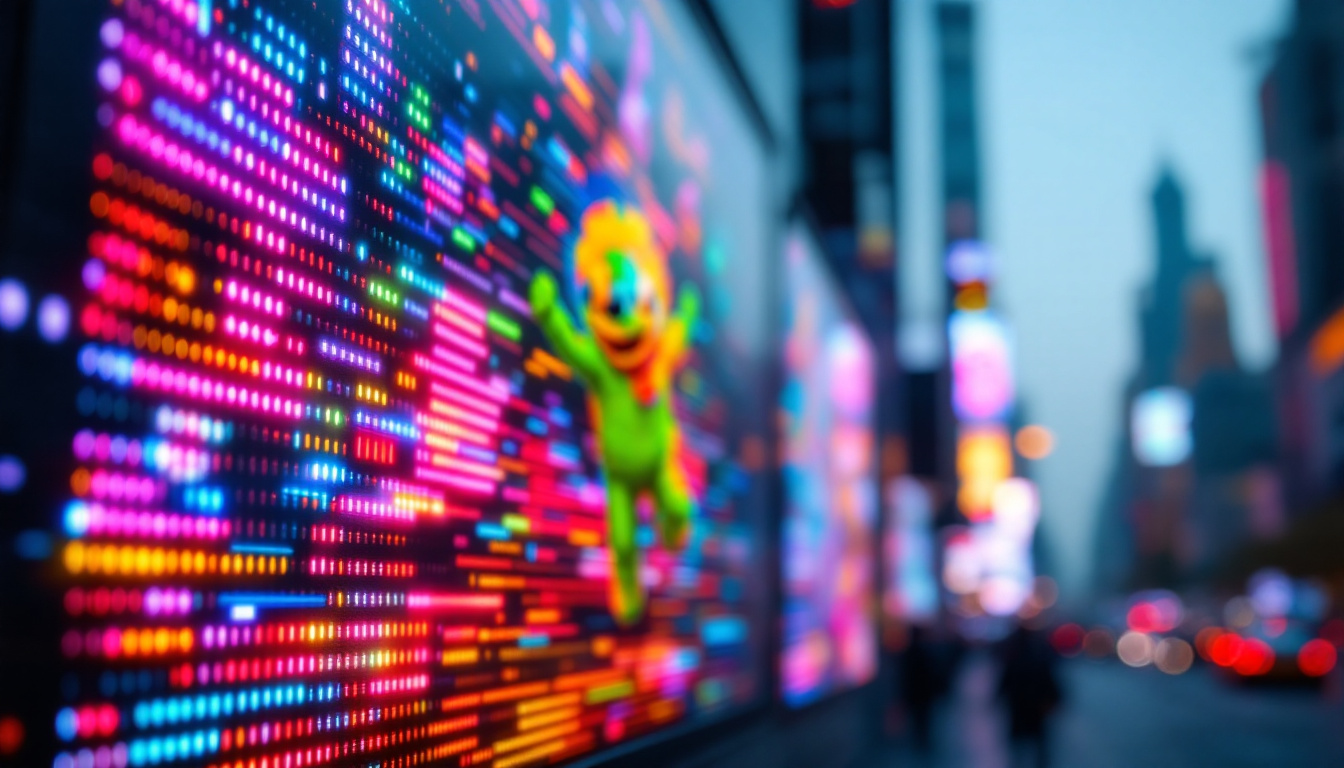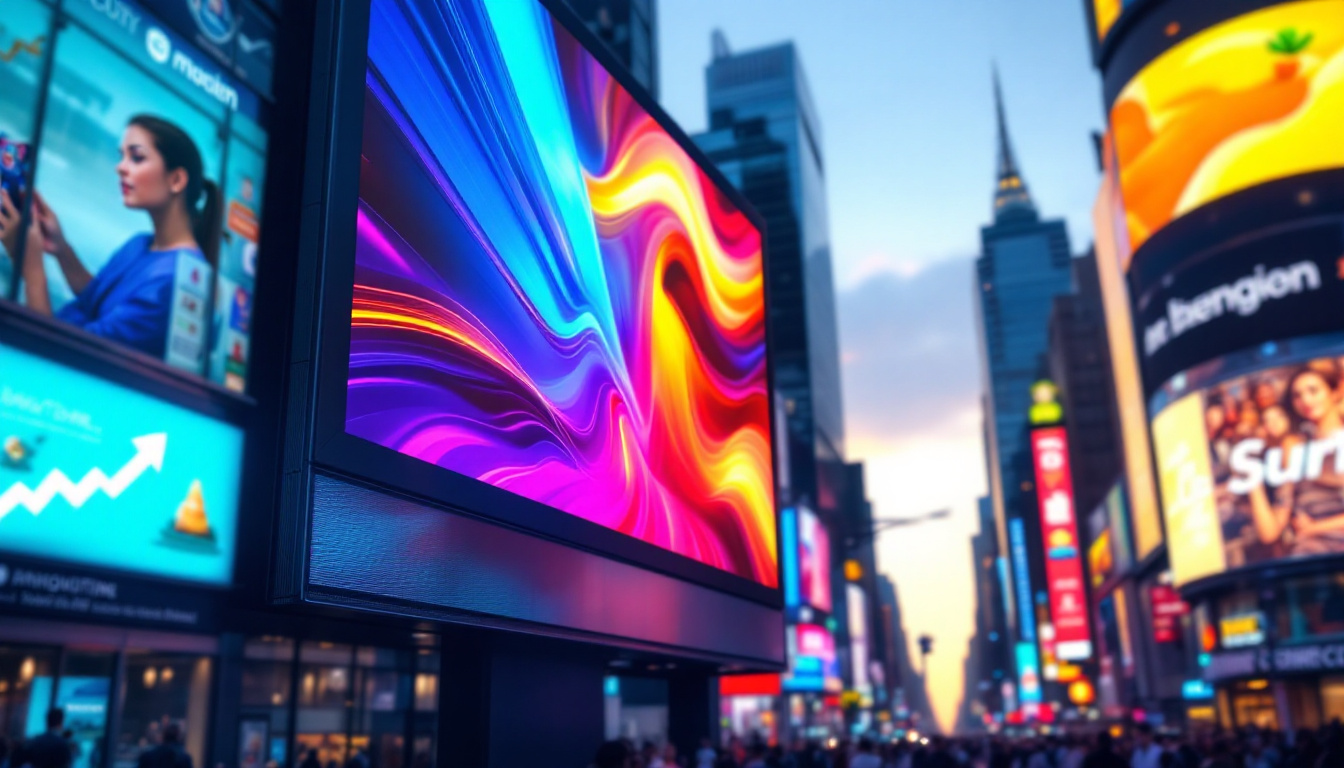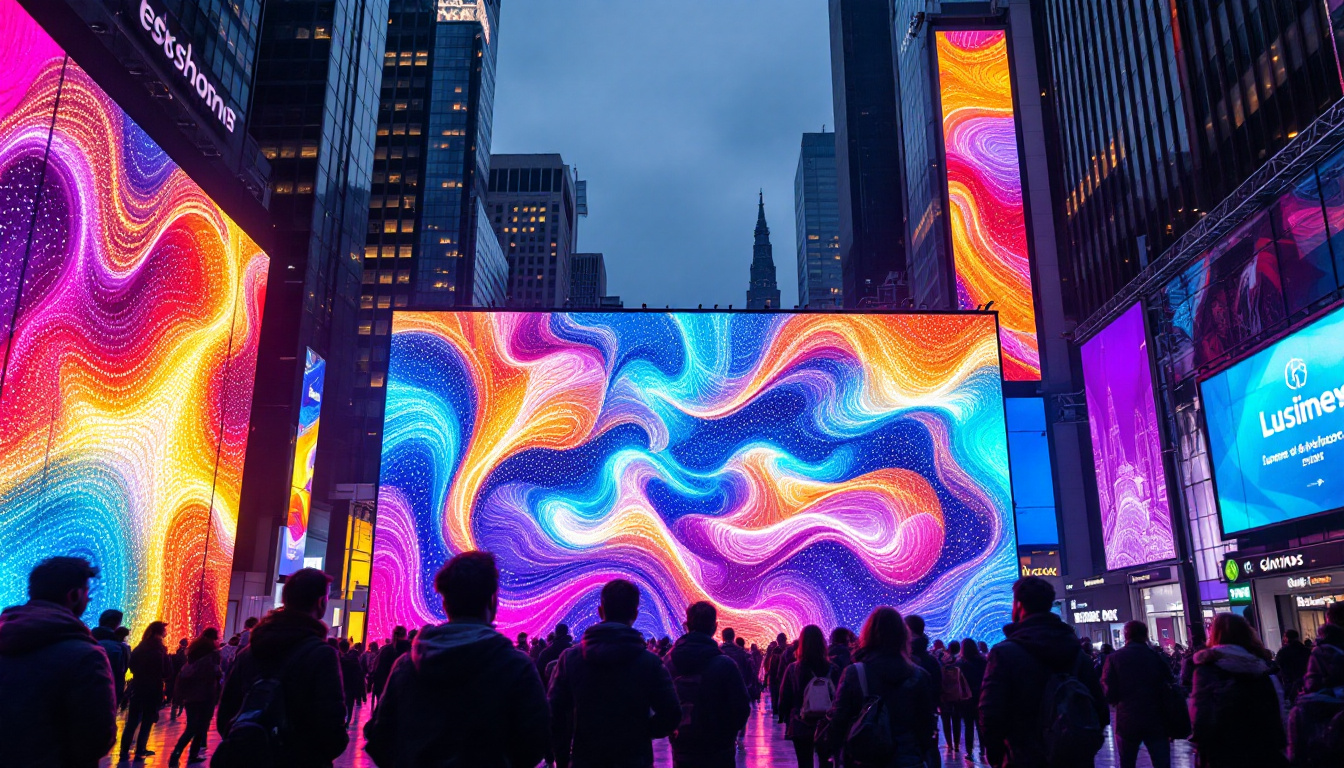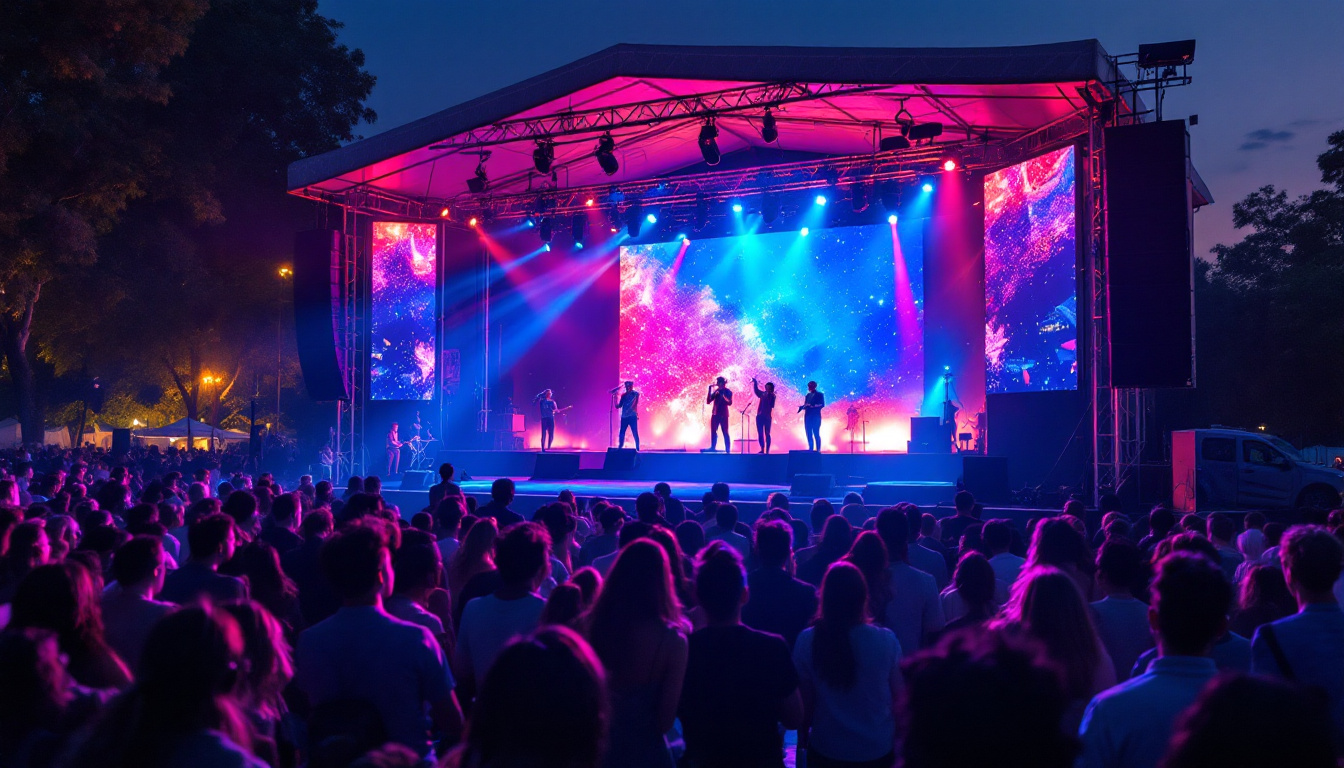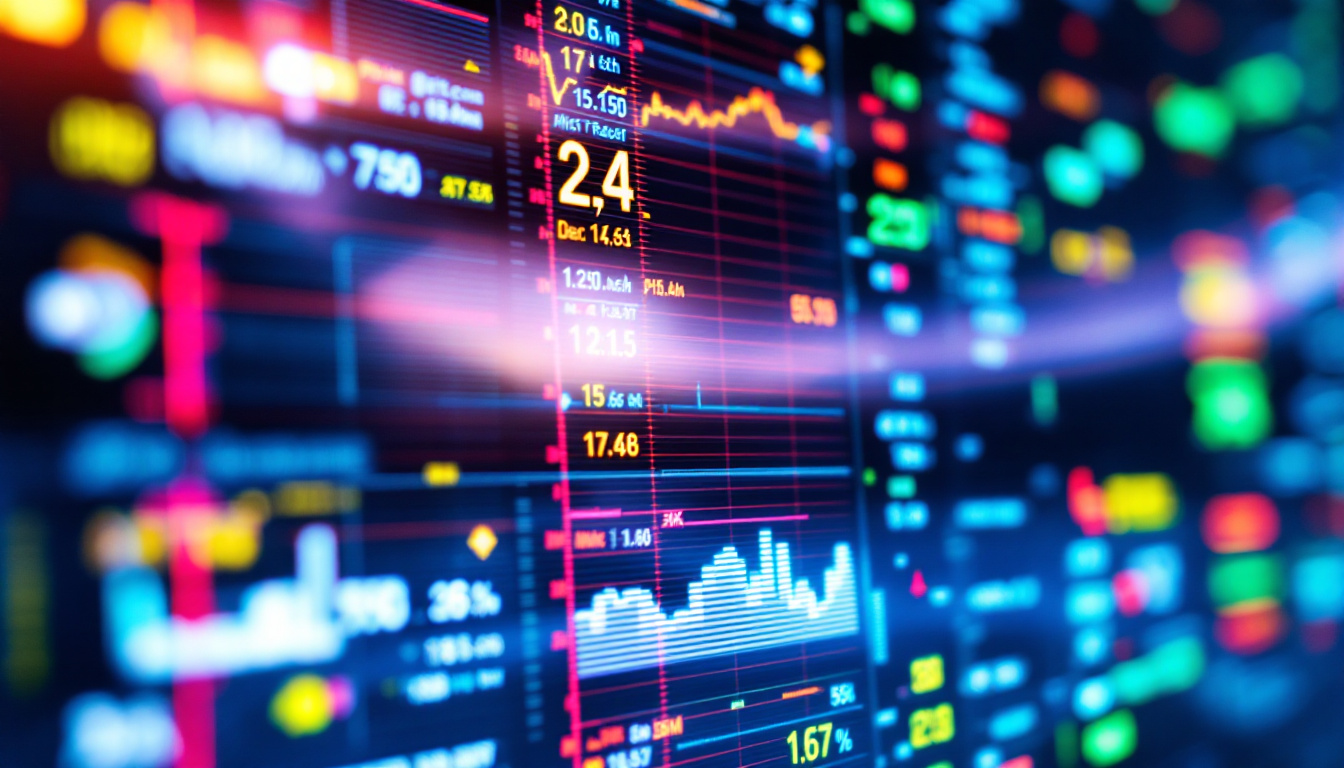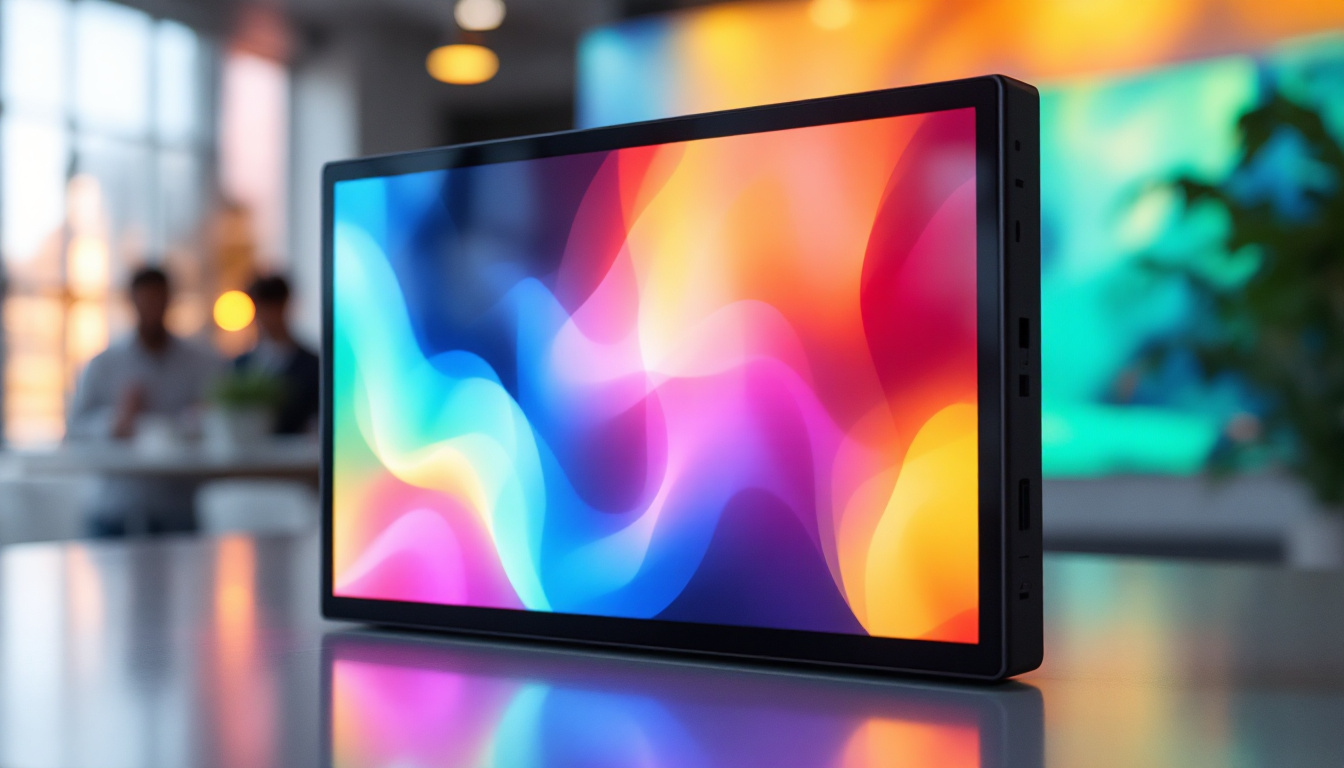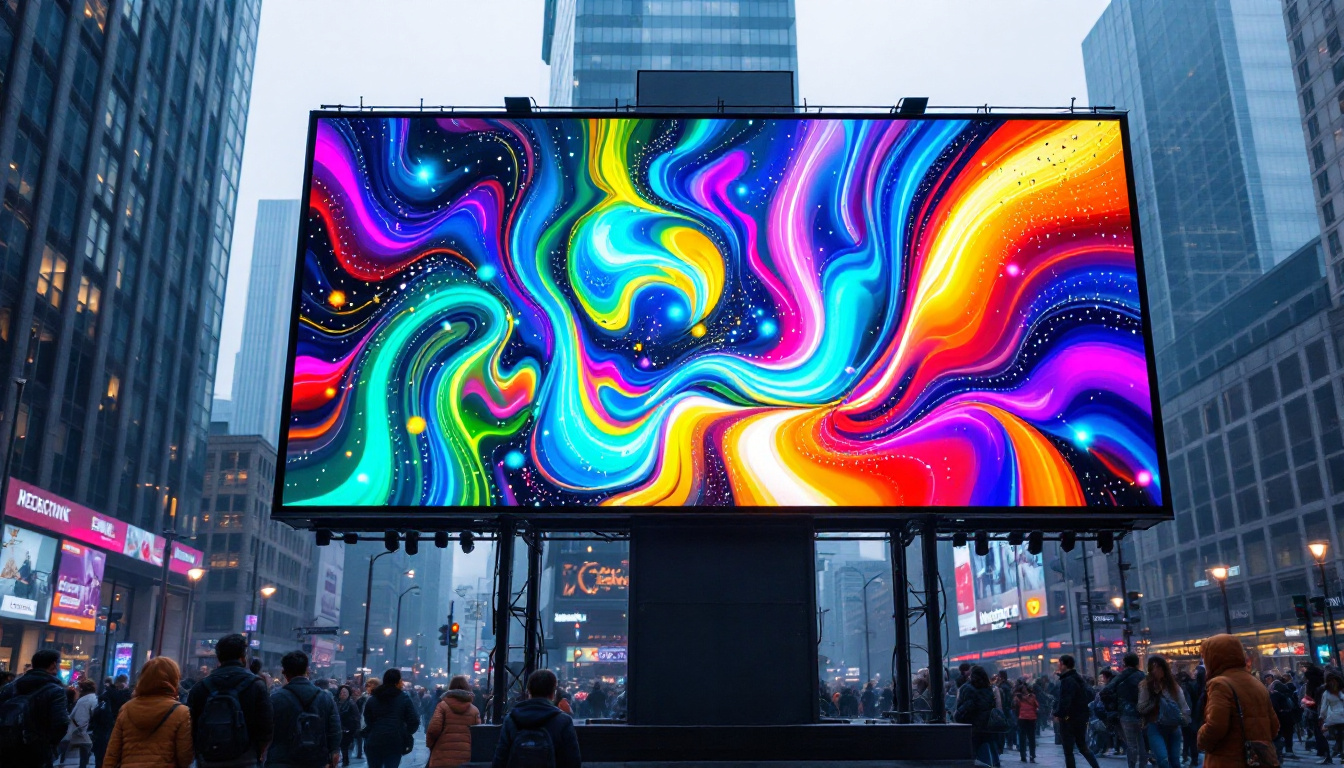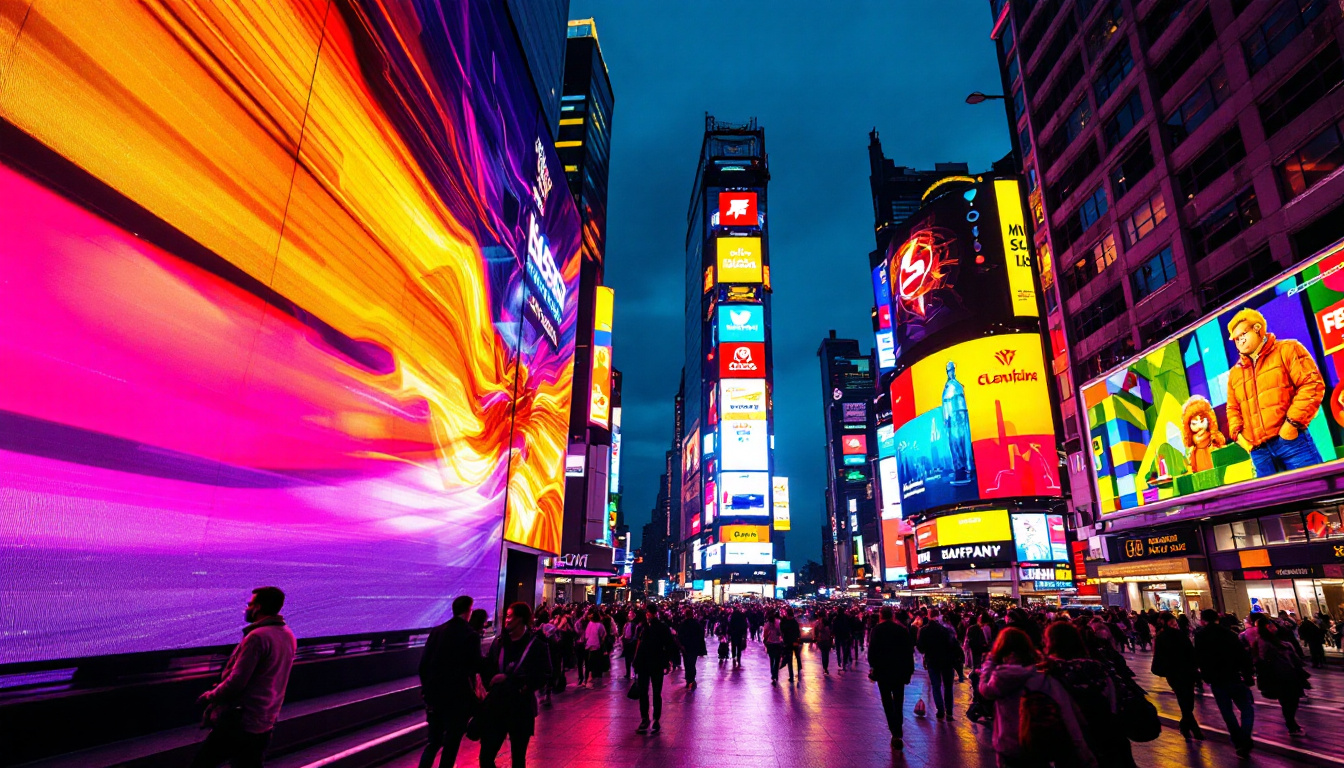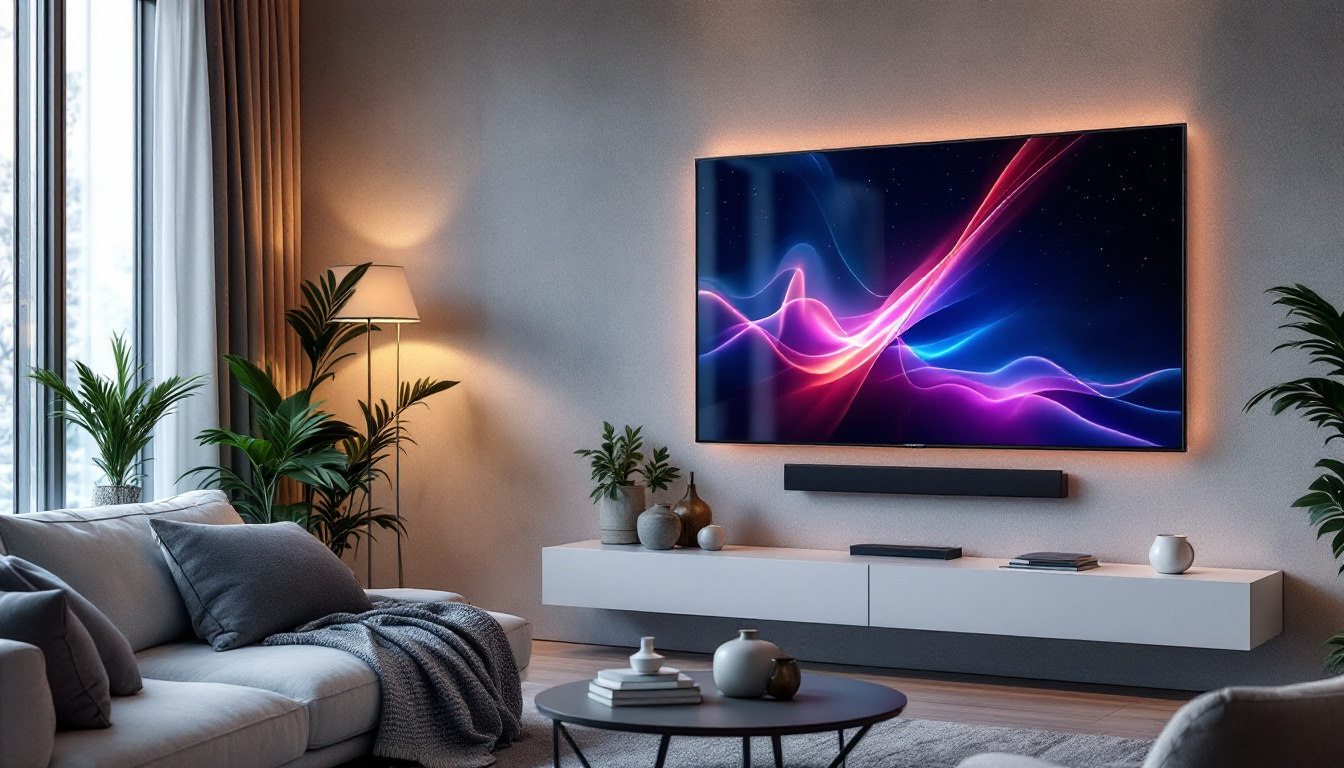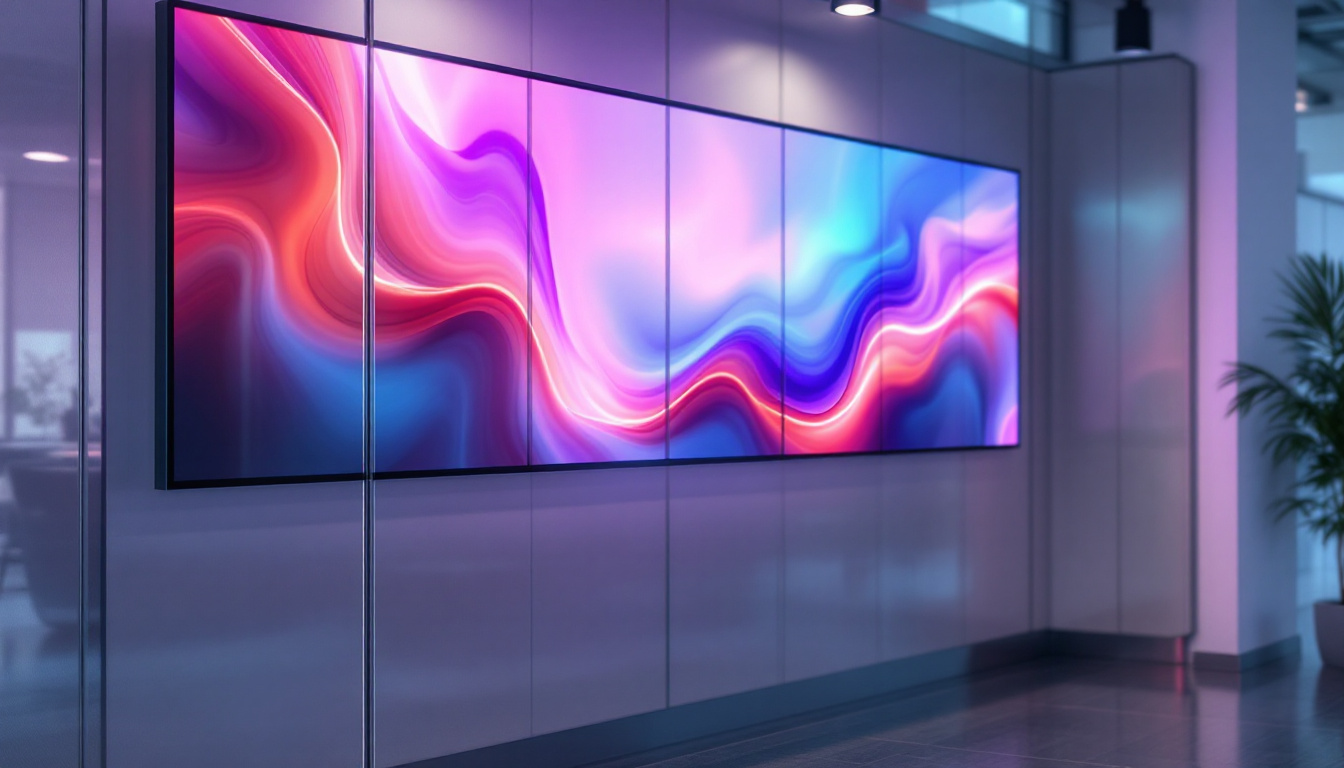In the modern world, LED displays have become an integral part of our daily lives. From advertising billboards to television screens, LED technology has revolutionized the way visual information is presented. This article delves into the intricacies of LED displays, exploring their technology, applications, and benefits.
Understanding LED Technology
Light Emitting Diodes (LEDs) are semiconductor devices that emit light when an electric current passes through them. This technology is at the heart of LED displays, which consist of numerous tiny LEDs arranged in a grid. The combination of these individual light sources creates vibrant images and videos, making LED displays a popular choice for various applications. From billboards to television screens, the versatility of LED technology has revolutionized the way we consume visual content, providing not only brightness but also energy efficiency compared to traditional lighting methods.
The Basics of LED Functionality
At its core, an LED works by electroluminescence. When electrons move through the semiconductor material, they release energy in the form of light. The color of the light emitted depends on the materials used in the semiconductor. For instance, different combinations of gallium, arsenide, and phosphor can produce red, green, and blue light, which are the primary colors used in LED displays. This intricate process is not only fascinating but also highlights the advanced engineering that goes into creating these tiny yet powerful light sources.
Each pixel on an LED display typically consists of red, green, and blue diodes. By adjusting the intensity of each color, a wide spectrum of colors can be created. This RGB (Red, Green, Blue) model is fundamental to the operation of LED displays, allowing for the reproduction of high-quality images and videos. Furthermore, advancements in technology have led to the development of improved color mixing techniques, enhancing the overall visual experience. With the introduction of features like high dynamic range (HDR), viewers can enjoy deeper contrasts and more vivid colors, making LED displays even more appealing for both entertainment and professional use.
Types of LED Displays
LED displays come in various forms, each designed for specific applications. The most common types include:
- Direct View LED Displays: These displays are made up of individual LEDs that are visible from a distance. They are often used in large outdoor advertising screens and stadium displays. Their ability to maintain visibility in bright sunlight makes them a favored choice for outdoor environments, where traditional displays might struggle.
- LED Backlit Displays: These screens use LEDs to backlight an LCD panel. This technology enhances brightness and contrast, making it ideal for televisions and computer monitors. The backlighting can be adjusted dynamically, improving energy efficiency and providing a better viewing experience in various lighting conditions.
- Organic LED Displays (OLED): OLEDs utilize organic compounds to emit light, allowing for thinner screens and better color accuracy. They are widely used in smartphones and high-end televisions. The flexibility of OLED technology also enables the creation of curved and even foldable displays, pushing the boundaries of design and functionality.
In addition to these common types, there are also specialized LED displays, such as those used in digital signage and architectural lighting. Digital signage leverages LED technology to create engaging advertisements that can be easily updated, allowing businesses to communicate with their audience in real-time. Meanwhile, architectural LED lighting can transform buildings and public spaces, enhancing aesthetics while providing energy-efficient illumination. As LED technology continues to evolve, we can expect even more innovative applications that will further integrate these displays into our daily lives.
Applications of LED Displays
LED displays have found their way into various sectors, showcasing their versatility and effectiveness. Their applications range from entertainment to information dissemination, and they continue to evolve with technological advancements.
Advertising and Marketing
One of the most prominent uses of LED displays is in advertising. Digital billboards and signage have become commonplace in urban areas, capturing the attention of passersby with bright colors and dynamic content. The ability to change advertisements in real-time allows businesses to target specific audiences and promote timely offers.
Moreover, LED displays can be programmed to display interactive content, further engaging potential customers. This adaptability makes them a powerful tool for marketers looking to enhance brand visibility and customer interaction.
Entertainment and Events
In the entertainment industry, LED displays play a crucial role in concerts, festivals, and sporting events. Large LED screens are used to broadcast live performances, ensuring that audiences can enjoy the show from any angle. The high brightness and contrast levels of LED technology make it suitable for outdoor events, where ambient light can be a challenge.
Additionally, LED displays are used in theaters and cinemas to create immersive experiences. With advancements in technology, the integration of LED walls and screens has transformed the way stories are told visually, enhancing the overall experience for viewers.
Information and Communication
LED displays are also widely used for informational purposes, such as in transportation hubs, corporate environments, and public spaces. Digital signage in airports and train stations provides real-time updates on schedules, delays, and other important information, improving the overall efficiency of travel.
In corporate settings, LED displays can be used for presentations, meetings, and internal communications. Their ability to display high-quality images and videos makes them an effective tool for conveying messages clearly and engagingly.
Advantages of LED Displays
The growing popularity of LED displays can be attributed to their numerous advantages over traditional display technologies. These benefits make them a preferred choice for many applications.
Energy Efficiency
One of the most significant advantages of LED displays is their energy efficiency. Compared to traditional incandescent or fluorescent lighting, LEDs consume significantly less power while providing brighter illumination. This not only reduces electricity costs but also minimizes the carbon footprint, making LED displays an environmentally friendly option.
Furthermore, the longevity of LED technology contributes to its cost-effectiveness. LEDs can last up to 100,000 hours, reducing the need for frequent replacements and maintenance. This durability is particularly beneficial for outdoor displays that are exposed to harsh weather conditions.
High-Quality Visuals
LED displays are known for their superior image quality. They offer high brightness levels, excellent contrast ratios, and vibrant colors, making them suitable for various lighting conditions. This capability ensures that content is visible and engaging, whether in bright sunlight or dimly lit environments.
Additionally, the fast response time of LEDs allows for smooth video playback, making them ideal for dynamic content. This feature is particularly important in applications such as sports broadcasting and live events, where real-time visuals are crucial.
Versatility and Customization
LED displays are incredibly versatile, allowing for a wide range of sizes, shapes, and configurations. They can be seamlessly integrated into various environments, from large outdoor billboards to small indoor screens. This adaptability makes them suitable for diverse applications, including retail, transportation, and entertainment.
Moreover, LED technology can be customized to meet specific needs. For instance, flexible LED panels can be shaped to fit unique architectural designs, enabling creative installations that enhance the aesthetic appeal of a space.
Challenges and Considerations
Despite their many advantages, LED displays are not without challenges. Understanding these limitations is essential for making informed decisions when selecting display technology.
Initial Costs
The initial investment for LED displays can be higher compared to traditional display technologies. Although the long-term savings in energy and maintenance costs may offset this expense, businesses must consider their budget and return on investment (ROI) when making a decision.
Additionally, the pricing of LED displays can vary significantly based on factors such as resolution, size, and manufacturer. It is crucial to evaluate the specific needs of the application to ensure that the right type of LED display is chosen.
Heat Management
LED displays generate heat during operation, which can impact performance and longevity if not managed properly. High temperatures can lead to reduced brightness and color accuracy over time. Therefore, adequate cooling systems must be implemented, especially in large installations or environments with high ambient temperatures.
Regular maintenance and monitoring of temperature levels can help mitigate these issues, ensuring that the display operates optimally throughout its lifespan.
Environmental Impact
While LED technology is generally considered more environmentally friendly than traditional options, it is important to consider the materials used in manufacturing. The disposal of LED displays can pose environmental challenges if not handled correctly. Proper recycling and disposal methods should be employed to minimize the ecological footprint of LED technology.
The Future of LED Displays
As technology continues to advance, the future of LED displays looks promising. Innovations in materials and manufacturing processes are paving the way for even more efficient and versatile displays.
Emerging Technologies
One of the most exciting developments in LED technology is the rise of MicroLED and MiniLED displays. These technologies offer improved brightness, contrast, and color accuracy, pushing the boundaries of what is possible in display technology. MicroLED, in particular, allows for smaller pixel sizes, enabling higher resolutions and greater detail in images.
Additionally, advancements in flexible and transparent LED displays are opening up new possibilities for creative applications. These displays can be integrated into windows, walls, and other surfaces, transforming the way information is presented in various environments.
Integration with Smart Technologies
As smart technologies become more prevalent, the integration of LED displays with IoT (Internet of Things) systems is on the rise. This connectivity allows for real-time data sharing and content updates, enhancing the functionality of LED displays in various applications.
For example, smart LED signage can adjust its content based on environmental factors, such as weather conditions or audience demographics. This level of interactivity and responsiveness is set to redefine how businesses engage with their customers.
Conclusion
LED displays have transformed the landscape of visual communication, offering numerous advantages over traditional display technologies. Their energy efficiency, high-quality visuals, and versatility make them an ideal choice for a wide range of applications, from advertising to entertainment.
As technology continues to evolve, the future of LED displays promises even more exciting developments. By understanding the intricacies of LED technology and its applications, businesses and consumers alike can make informed decisions that harness the full potential of this innovative technology.
In a world increasingly driven by visual communication, LED displays will undoubtedly play a pivotal role in shaping how information is conveyed and experienced. Whether in a bustling city or a quiet office, the impact of LED technology is here to stay.
Discover LumenMatrix’s Innovative LED Display Solutions
As you consider the future of visual communication and the role LED displays will play, LumenMatrix stands at the forefront of this technological evolution. Our commitment to innovation ensures that our LED display modules not only enhance brand visibility but also create immersive visual experiences that captivate and engage. Whether you’re interested in Indoor LED Walls, Outdoor Displays, or specialized solutions like Vehicle Displays and Transparent LED options, LumenMatrix has a tailored solution to meet your needs. Embrace the power of advanced digital signage and let LumenMatrix help you share your message with unparalleled impact and clarity. Check out LumenMatrix LED Display Solutions today and see how we can transform your visual communication strategy.

